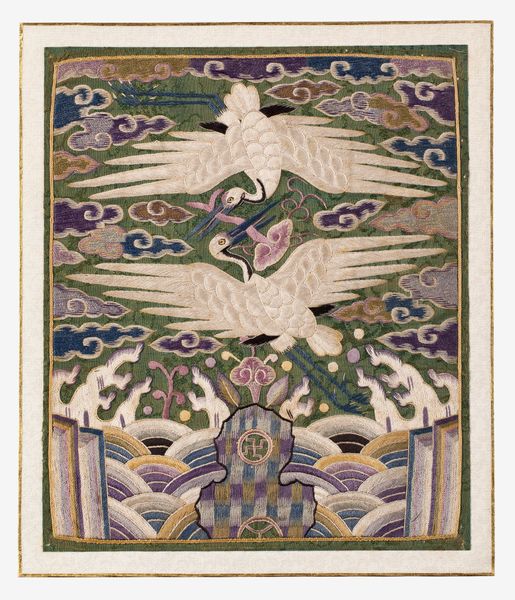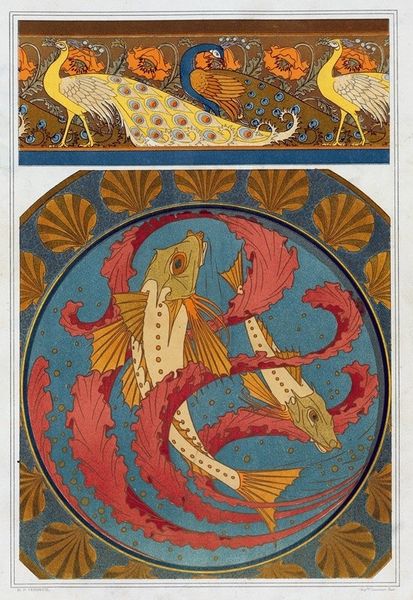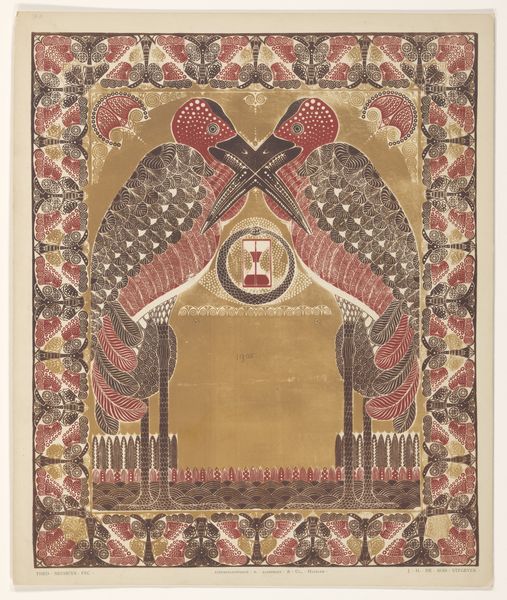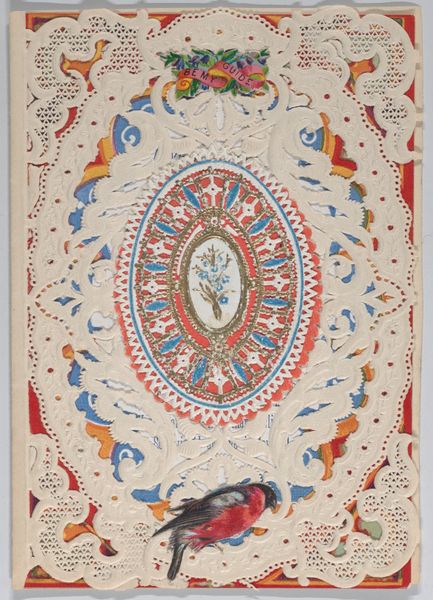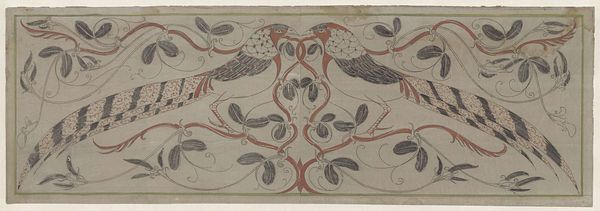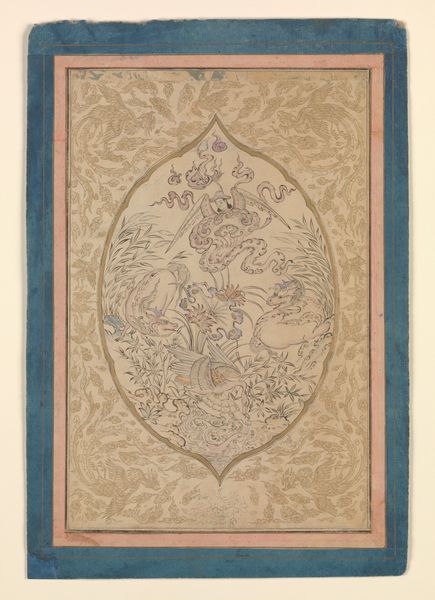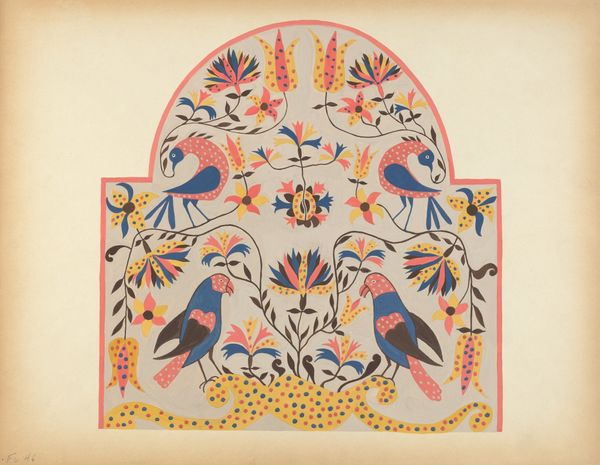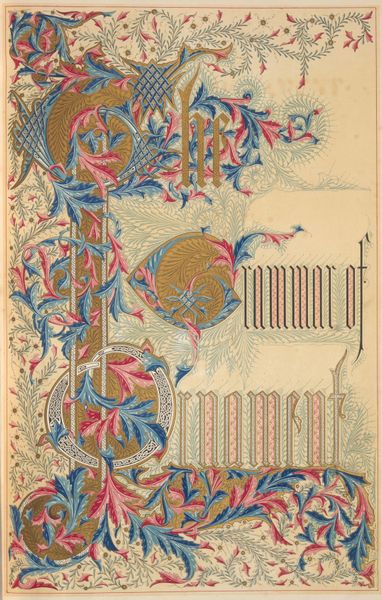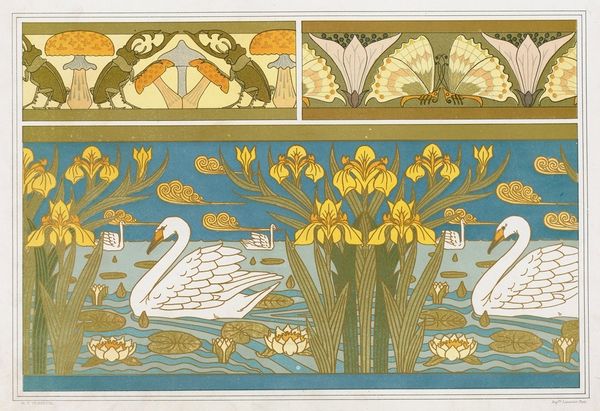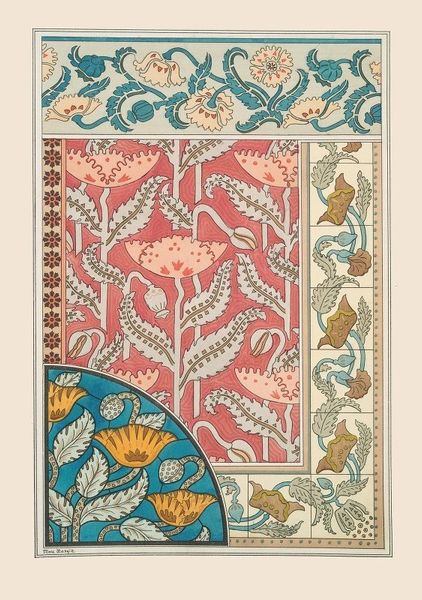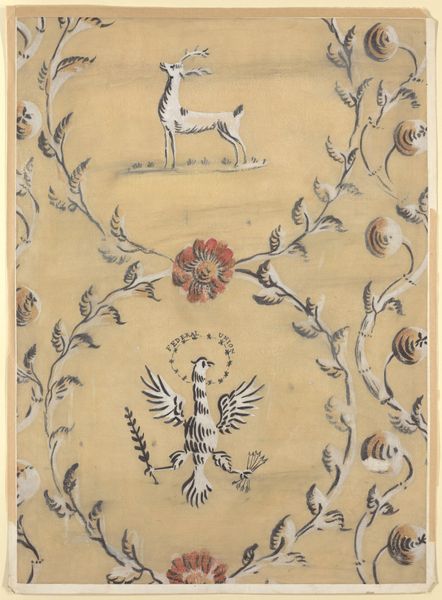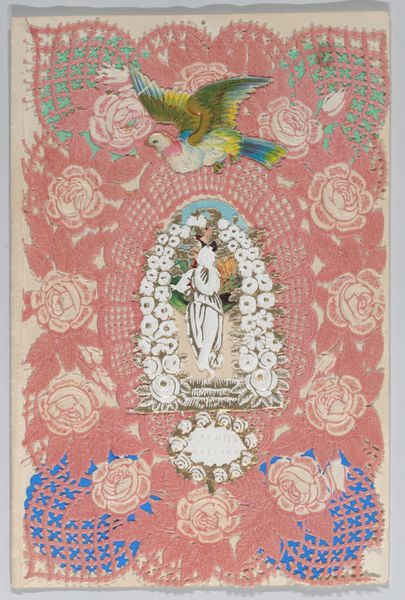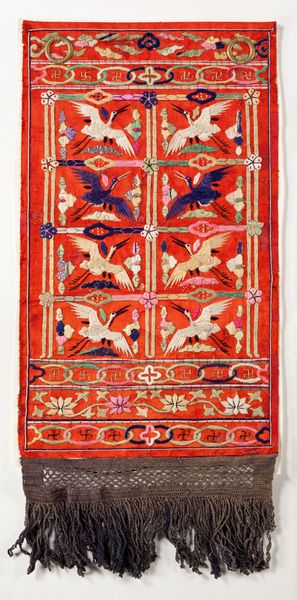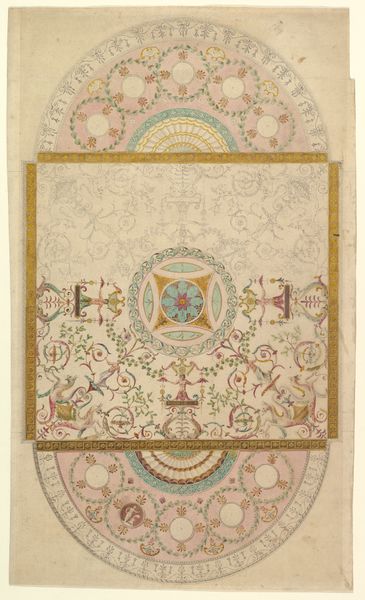
drawing, textile
#
drawing
#
asian-art
#
landscape
#
textile
#
figuration
#
ethnic pattern
#
earthenware
#
calligraphy
Dimensions: 7 11/16 × 9 1/8 in. (19.53 × 23.18 cm)10 × 8 5/8 in. (25.4 × 21.91 cm) (mount)
Copyright: Public Domain
Curator: This textile work, known as a Korean Hyompae, dates back to around the 19th century. You can find it here at the Minneapolis Institute of Art. Editor: Immediately, it whispers tranquility. The subtle sage green backdrop and the intricate stitches of the cranes against the clouds... it's like a captured moment of serene flight. Curator: Precisely! These Hyompae cloths often functioned as door or wall decorations, serving both aesthetic and symbolic purposes. We're looking at embroidery here—layers upon layers of dyed silk threads, all meticulously stitched onto a cotton or hemp base. Consider the sheer labor involved. Editor: Makes you wonder about the maker, doesn't it? Imagining the steady hands and patient heart weaving stories of longevity and good fortune. Look closely at how those clouds swirl and that lower part, that is intriguing in structure and pattern. Curator: Yes, cranes are potent symbols of long life and marital bliss in Korean culture, a popular choice for auspicious objects. That lower registration marks another traditional symbol—a stylized cliff. And that complex geometrical figure in the very center grounds the entire composition in sacred symbolism. Editor: Grounding indeed, like a silent wish held firm amidst those graceful arcs. But looking at the piece through a contemporary lens, the swastika-like element gives me a little pause— especially understanding the implications for 20th century audiences... Curator: I see your point! What looks like a swastika is called a "manja". An ancient buddhist sign symbolizing universal wellbeing and peace, it also marks status in Korean culture. But certainly worth the visitor being mindful when reflecting upon such symbols from different points of historical reference! Editor: So true! It’s a visual poem – a meditation on time, devotion, and, of course, context. Seeing something old anew forces fresh vision, no? Curator: Definitely. And looking closer reveals a piece woven from meticulous threads of work and deeply intentional acts of craft. What it communicates is something both visually attractive and thoughtfully wrought.
Comments
No comments
Be the first to comment and join the conversation on the ultimate creative platform.
